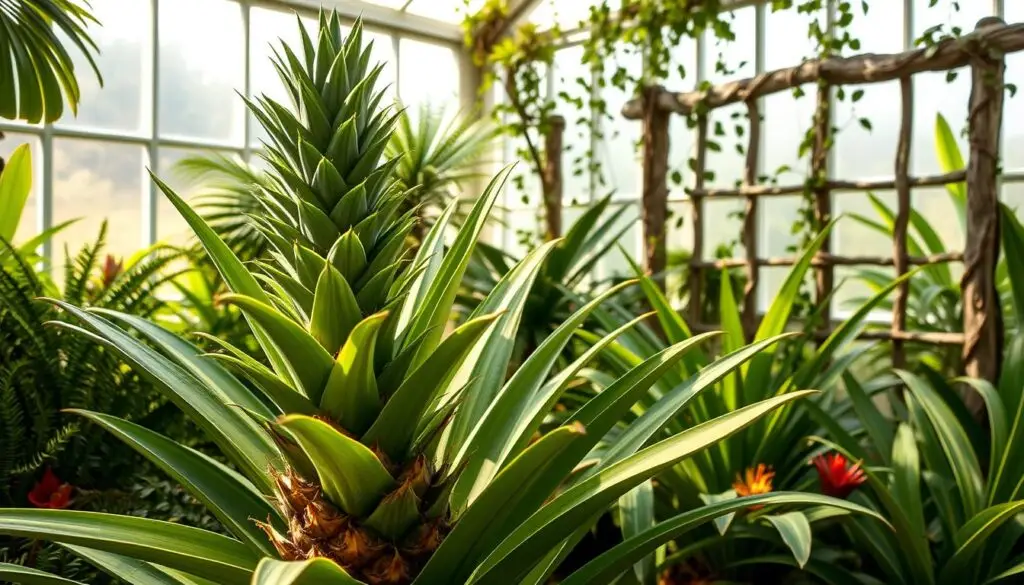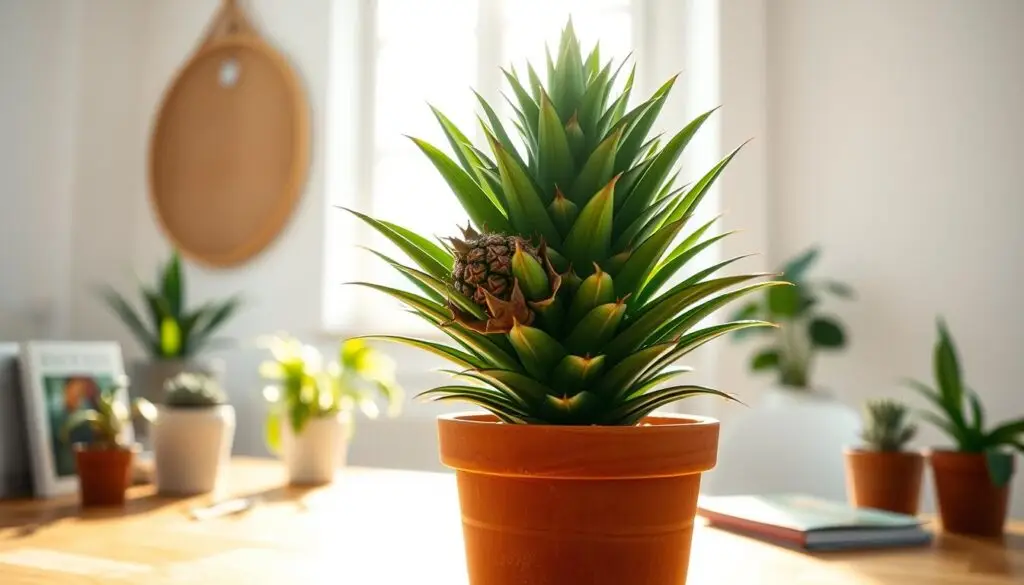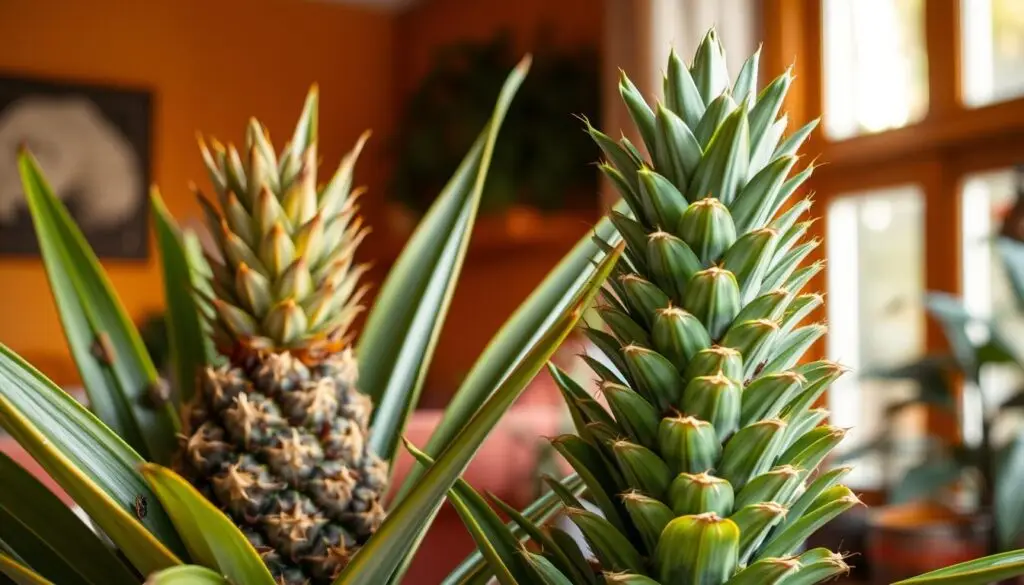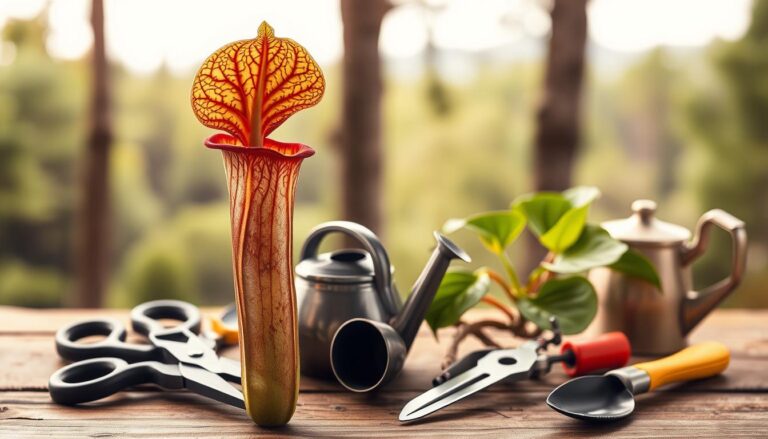How to Care for an Indoor Pineapple Plant
Have you ever dreamed of growing your own tropical fruit at home? Imagine the satisfaction of nurturing a Indoor Pineapple Plant from a simple grocery store find to a thriving, fruit-bearing beauty. It’s not just a gardening project—it’s a journey that connects you to nature and rewards your patience with a sweet, homegrown harvest.
Pineapple plants, part of the bromeliad family, are surprisingly adaptable to home environments. With the right care, you can enjoy their lush, spiky leaves and, eventually, their delicious fruit. Whether you’re a seasoned plant enthusiast or a beginner, this guide will walk you through the essentials of light, soil, and water to help your plant thrive.
From its tropical origins to its unique growth cycle, the pineapple plant is a fascinating addition to any space. With proper attention, you can create the ideal conditions for it to flourish and even produce fruit. Let’s dive into the basics of caring for this remarkable plant.
Table of Contents
Understanding Your Indoor Pineapple Plant
Discover the fascinating journey of nurturing a pineapple from start to finish. This tropical gem, scientifically known as Ananas comosus, is part of the bromeliad family. Its unique growth cycle and striking appearance make it a standout addition to your home.
Botanical Overview and Growth Stages
The pineapple plant originates from tropical regions, thriving in warm climates. It starts as a leafy top from a store-bought fruit and progresses through several stages. Over time, it develops a robust root system and spiky leaves, eventually producing a vibrant flower spike.
Understanding these stages is crucial for providing the right care. From the initial planting to the eventual harvest, each phase requires specific attention to light, water, and soil conditions.
Varieties and Characteristics
There are several varieties of pineapple plants, each with unique traits. Some are ornamental, featuring dwarf sizes and colorful leaves, while others are cultivated for their edible fruit. Regardless of the type, all share common characteristics like spiky leaves and a central flower spike.
These plants are not only visually appealing but also hardy, making them suitable for home cultivation. Their ability to adapt to indoor conditions is a testament to their resilience.
From Pineapple Top to Mature Plant
Starting with a pineapple top is a simple and rewarding process. After cutting the top, let it dry for a few days to prevent rot. Then, plant it in well-draining soil and place it in a sunny spot. With patience, it will grow into a mature plant capable of producing fruit.
This journey can take up to two years, but the reward of harvesting your own pineapple is well worth the wait. By understanding each growth stage, you can ensure your plant thrives and reaches its full potential.
Creating the Ideal Growing Environment
Creating the right conditions for your bromeliad can make all the difference. To ensure your plant thrives, focus on providing the right light, temperature, and soil. These elements are crucial for healthy growth and eventual fruit production.
Light and Temperature Requirements
Your plant needs bright, direct light for at least six to eight hours daily. A sunny windowsill or LED grow lights can provide the necessary brightness. If natural light is limited, supplement with artificial lighting to maintain consistent growth.
Keep the temperature between 65°F and 95°F. This range mimics the plant’s tropical origins. During winter, avoid placing it near cold drafts. In summer, ensure it’s not exposed to excessive heat, which can stress the plant.

Choosing the Right Pot and Soil Mix
Select a pot that’s at least 5 gallons in size. This gives the roots ample space to grow. Ensure the container has drainage holes to prevent waterlogging, which can lead to root rot.
Use a well-draining soil mix. A 50/50 blend of orchid compost and peat-free multi-purpose compost works well. This mix provides the right balance of nutrients and aeration. Slightly acidic or neutral pH soil is ideal for preventing fungal issues.
Proper potting and soil are essential for robust growth. They help avoid common problems like root rot and ensure your plant stays healthy year-round.
By setting up the right environment, you’ll create the perfect conditions for your plant to thrive. With consistent care, you’ll be rewarded with lush leaves and, eventually, delicious fruit.
Caring for Your Indoor Pineapple Plant
Mastering the care of your tropical treasure ensures a thriving and fruitful journey. From watering to pruning, each step plays a vital role in maintaining its health and encouraging growth. Let’s explore the essential techniques to keep your plant vibrant and productive.
Watering Techniques and Fertilization Schedule
Water your plant once or twice a week, depending on the season. Allow the top inch of soil to dry out before watering again. Overwatering can lead to root rot, while underwatering causes crispy leaves. Consistency is key.
For fertilization, use a balanced liquid fertilizer monthly during the growing season. Mature plants may require less frequent feeding. Here’s a simple schedule to follow:
| Stage | Fertilizer Type | Frequency |
|---|---|---|
| Young Plant | Weak Liquid Fertilizer | Monthly |
| Mature Plant | Balanced Fertilizer | Every 6 Weeks |
Pruning, Propagation, and Offshoot Management
Prune dry or damaged leaves to maintain a balanced appearance. Use clean shears to avoid infections. For propagation, remove offshoots from the mother plant once they’ve developed roots. Plant them in a well-draining mix to grow new plants.
Preventing Root and Top Rot
To prevent rot, ensure your pot has drainage holes. Avoid letting water sit in the saucer. If the top of the plant shows signs of rot, trim the affected area and adjust your watering routine.
Managing Pests and Diseases
Common pests like mealybugs and scale can harm your plant. Inspect leaves weekly and treat infestations with non-toxic solutions like neem oil. Maintain proper humidity to deter pests and fungal issues.

By following these care tips, you’ll create the ideal conditions for your plant to thrive. Regular monitoring and adjustments ensure a healthy, fruit-bearing journey.
Troubleshooting and Maintenance Tips
Even the most resilient plants can face challenges, but knowing how to troubleshoot ensures success. From watering issues to seasonal adjustments, staying proactive helps your tropical gem thrive. Here’s how to identify and address common problems while maintaining optimal health.
Identifying Overwatering and Underwatering Symptoms
Overwatering often leads to yellowing or blackened leaves, a sign of root rot. If the soil feels soggy or smells musty, reduce watering immediately. Let the top layer dry out before adding more moisture.
Underwatering, on the other hand, causes crispy, brown leaves. Check the soil weekly—if it’s dry an inch below the surface, it’s time to water. Consistent monitoring prevents both extremes and keeps your plant healthy.

Adjusting Care for Seasonal Changes
Seasonal shifts require careful adjustments. In winter, move your plant indoors to avoid cold drafts. Gradually acclimate it to lower light levels to prevent shock. Reduce watering frequency, as growth slows during cooler months.
During warmer months, ensure your plant gets at least six hours of bright light daily. Increase watering slightly but avoid waterlogging. A consistent routine helps your plant adapt smoothly to changing conditions.
Managing Pests and Diseases
Common pests like mealybugs and scale can harm your plant. Inspect leaves weekly for signs of infestation. Treat affected areas with non-toxic solutions like neem oil or soapy water. Maintaining proper humidity also deters pests.
Fungal issues, such as heart rot, can arise from poor drainage. Ensure your pot has adequate drainage holes and avoid overwatering. If symptoms appear, trim affected areas and adjust your care routine.
Reviving a Struggling Plant
If your plant shows signs of decline, act quickly. Trim damaged leaves, adjust watering, and ensure it’s in the right light conditions. Repotting with fresh compost can also rejuvenate growth. Patience and consistent care often bring struggling plants back to life.
Consistent Maintenance for Long-Term Success
Weekly checks and monthly adjustments are key to a thriving plant. Monitor soil moisture, inspect for pests, and adjust care as needed. Over time, these small steps ensure your plant stays healthy and eventually produces fruit.
By addressing issues promptly and maintaining a consistent routine, you’ll enjoy the rewards of a flourishing tropical treasure for years to come.
Conclusion
With the right approach, you can transform a simple top into a thriving fruit-bearing plant. Providing bright light, well-draining soil, and consistent care ensures healthy growth. Patience is key, as it may take up to two years for your plant to produce its first fruit.
Regularly monitor for pests and adjust care routines with seasonal changes. Proper watering and occasional fertilization keep the root system strong and the leaves vibrant. Troubleshooting issues like overwatering or nutrient deficiencies ensures long-term success.
Enjoy the journey of nurturing your tropical gem. With dedication and attention, you’ll witness the rewarding process of growth and harvest. Happy gardening!







